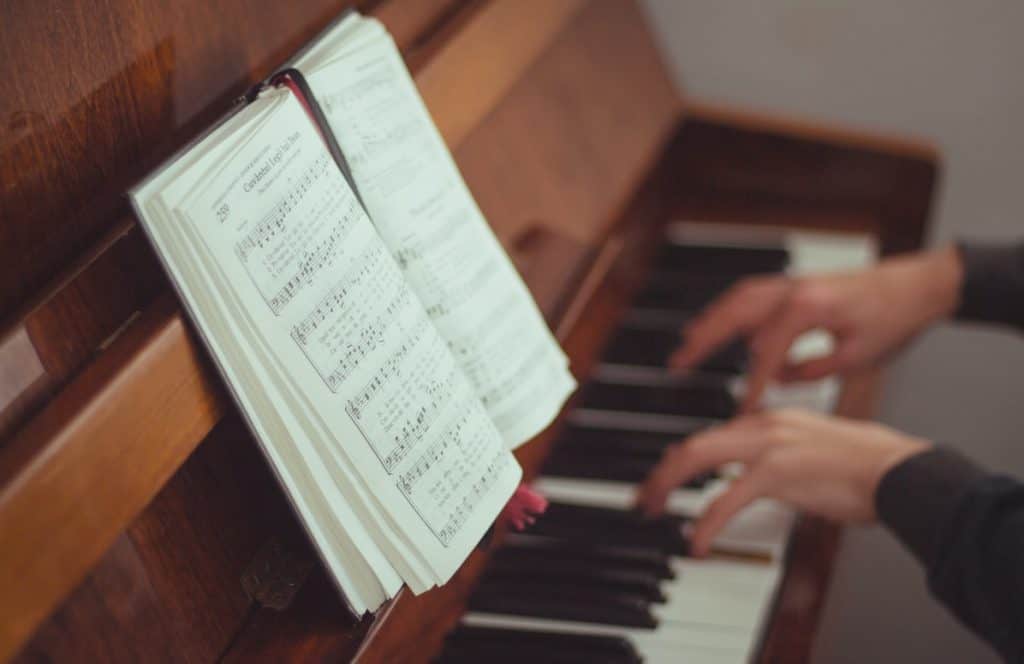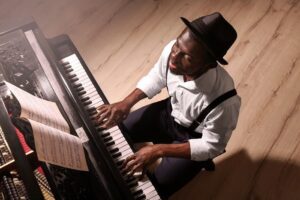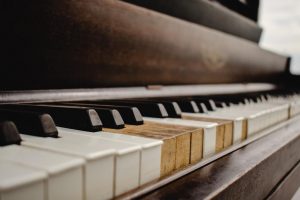What are augmented chords? In music theory, the augmented chord is distinct from the more commonly used major and minor chords. Its unique structure, where the fifth note is raised by a half step, creates a bright, interesting sound that will add more depth and variation to your harmonic palette. This chord is a must know for any musician. It plays a pivotal role in enriching harmonic progressions and musical narratives. This makes it a fascinating subject for exploration in the art of music theory and composition. If this has piqued your interest, Skoove is here for you. This article will break down how augmented chords work, the different types and how to incorporate them into your playing. Without further ado, let’s dive into the world of augmented piano chords.

What is an augmented chord?
Augmented chords are bright, rich chords composed of two stacked major third intervals. A major third interval is equal to four semitones, or four keys on the piano. Take a look at this example of a C Augmented chord. Have a go at playing this to familiarize yourself with the augmented sound.
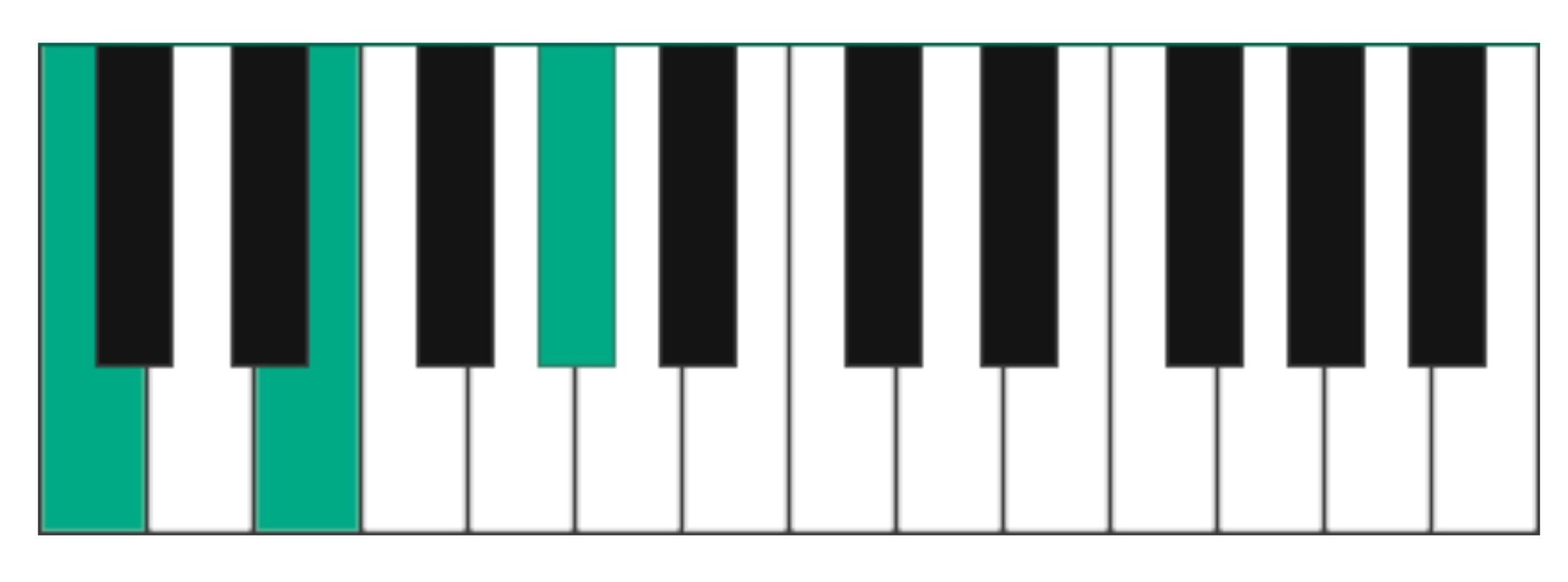
The finger position for the augmented chord is –
G# – Little finger
E – Middle finger
C – First finger
As the augmented chord often appears due to moving harmony in context feel free to use the fingering which works best for that situation.
The augmented chord symbol is a ‘+’ (the augmented symbol) or ‘aug’ placed next to the letter of the chord. This would be the symbol for the C augmented chord depicted above.
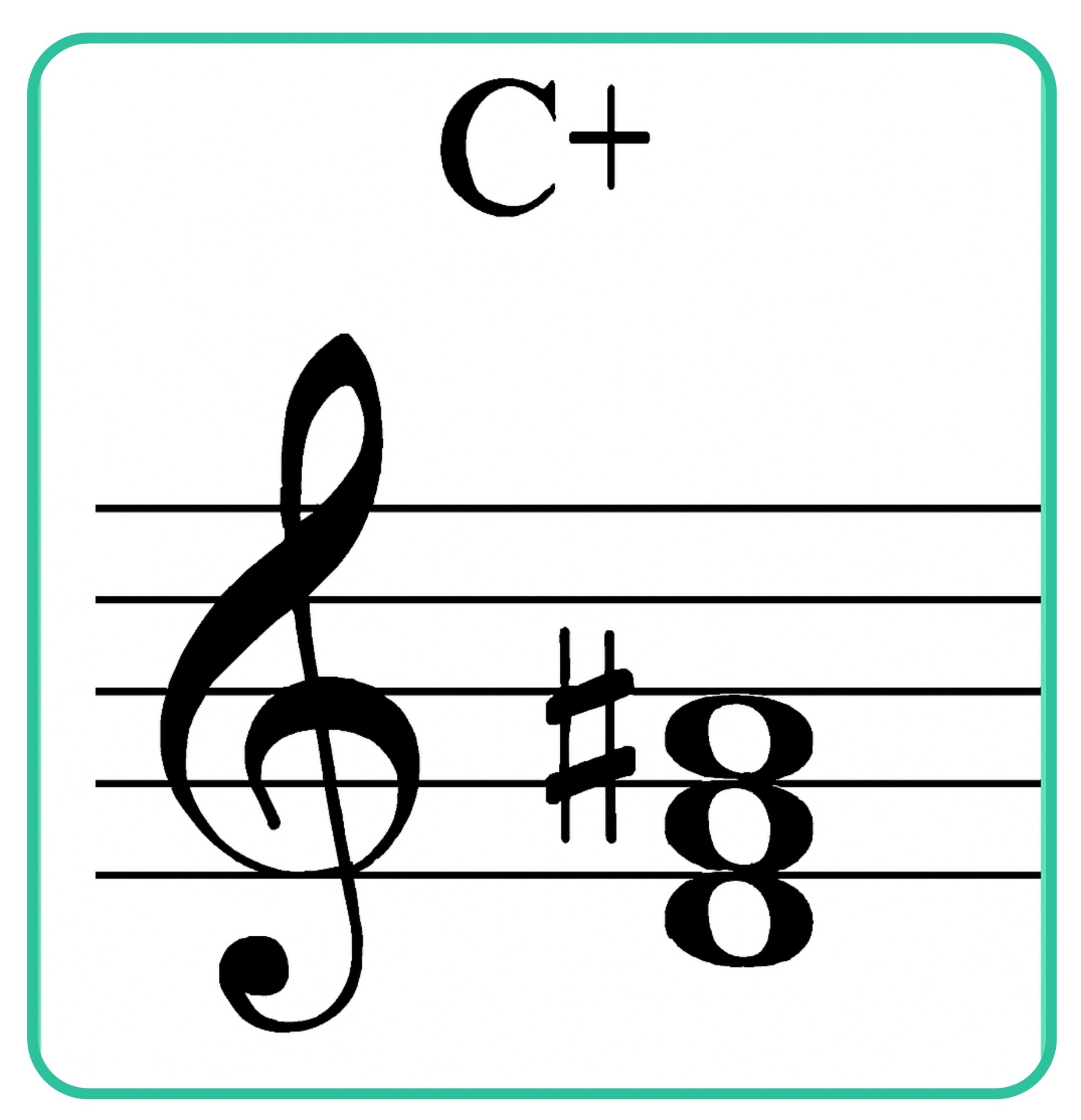
Types of augmented chords
Let’s examine a few of the various types and how to construct augmented chords.
Augmented triad
Triads are three note chords. Most triads come from combinations of stacked thirds in a scale and have specific harmonic functions based on their placement within that scale; the augmented chord is not usually categorized in that way. While you can construct augmented chords in whole tone scales and the harmonic minor scale, they mostly occur due to chromatic alterations to existing chords or chord substitutions or through chromatic alterations or passing tones.
Let’s examine how this augmented triad relates to major and minor chords. This will help us understand the theory behind these new piano chords.
- The formula for any major triad is 1 – 3 – 5 (C – E – G).
- Augmented triads have a raised fifth degree compared to a major chord. The formula for an augmented triad is always 1 – 3 – #5 (C – E – G#).
The raised fifth means that the fifth is ‘augmented’. This is where the name of the chord comes from. This combination of major thirds results in an augmented fifth, this is where the augmented chord gets unique harmonic properties.
Augmented chord formula
Let’s have a more in depth look at how to create augmented triads with a few examples.
G augmented
If we start from G and count up a major third, we find B. If we count up another major third from B, we find D#. This means that a G augmented triad (G aug) is G – B – D#. This is how it looks on the piano.
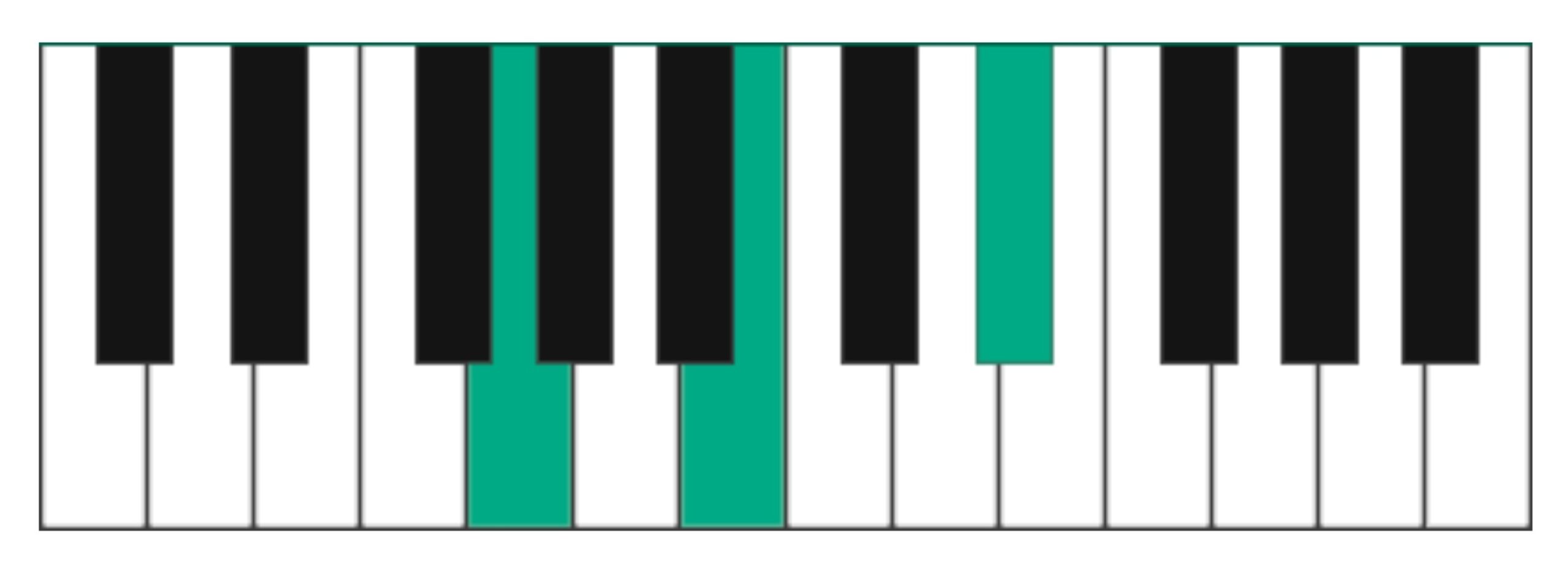
D augmented
If we start from the root note D and count up a major third, we reach F#. A major third above F# is A#. This means that an D augmented triad (D aug) is spelled F – F# – A#.
When we spell the notes of the chord, we must use the proper scale degrees and enharmonic spelling. For example, A is the fifth scale degree of D, this means that we must spell the chord from the root, even though A# and B♭ are enharmonic equivalents (share a pitch) the fifth has to be labeled as an A. If we spelled the D augmented chord D – F# – B♭, that would mean the formula for the augmented chord is 1 – 3 – ♭6.
Try figuring out a few more augmented chords yourself. This spelling may seem complex at first, do not worry Skoove has you covered. You can check them against our handy chord chart of all augmented chords.
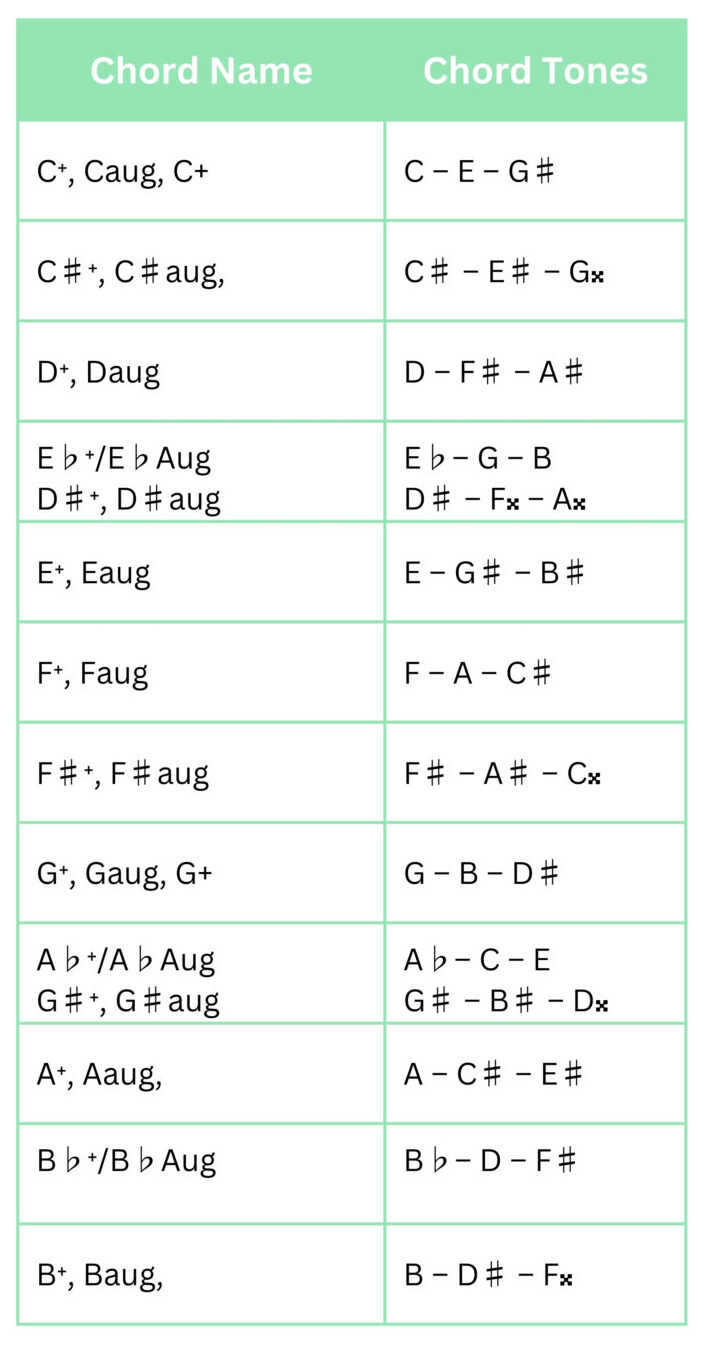
Augmented major seventh (^7+)
The augmented major seventh chord is a major seven chord with a raised fifth degree. As is often the case with extended and seventh chords they are found in jazz and film music to create a sense of intrigue and enrich harmony. It can be written as a chord symbol either as a ‘maj7+’ or ‘aug^7’.
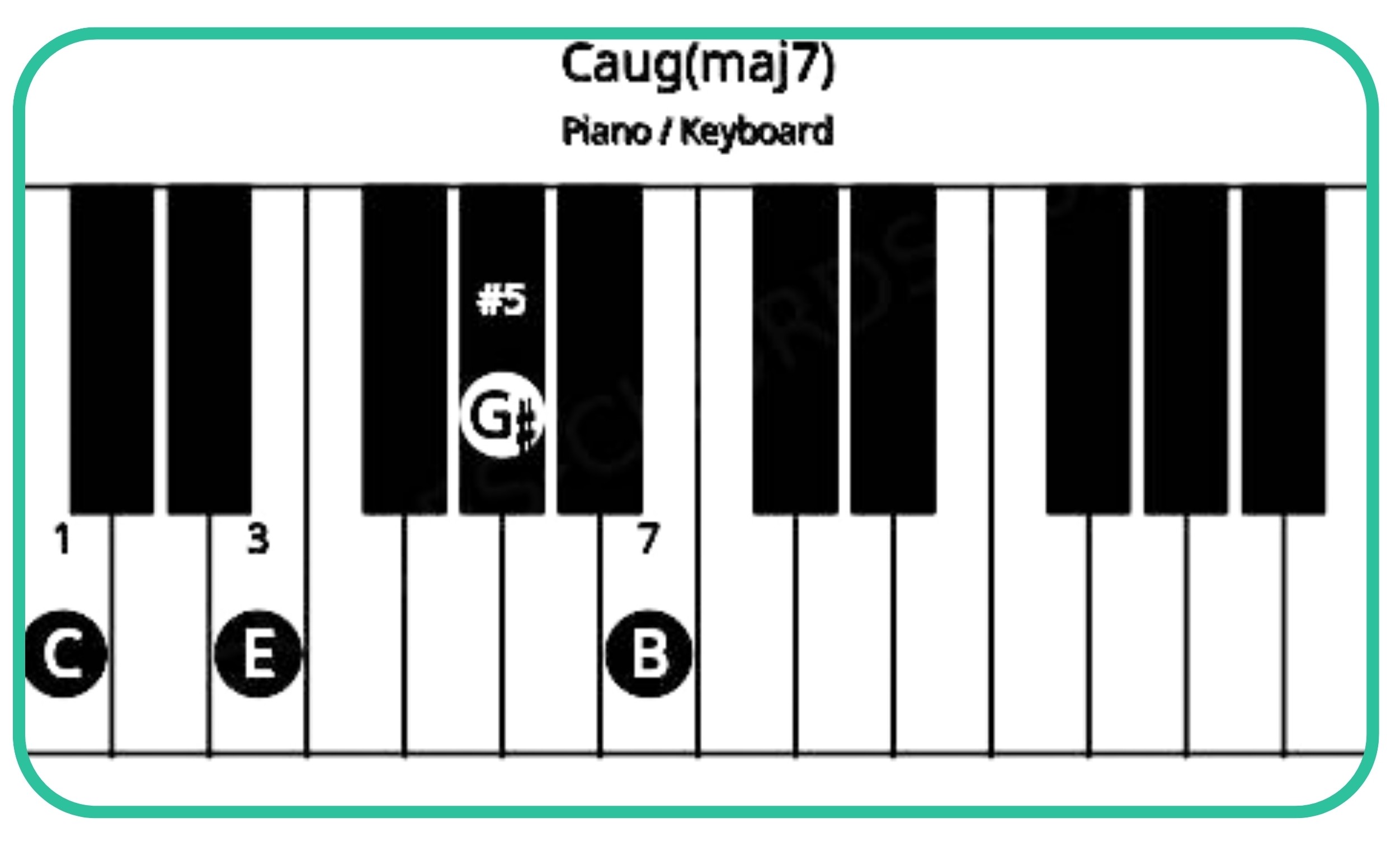
This chord is constructed by adding a minor third on top of the augmented triad creating a major seventh from the root.
C – (major third ) – E – (major third ) – G# – (minor third ) – B
Or from the root:
B – major seventh
G# – augmented fifth
E – major third
C – Root
Or you can just raise the fifth in a major 7 chord.
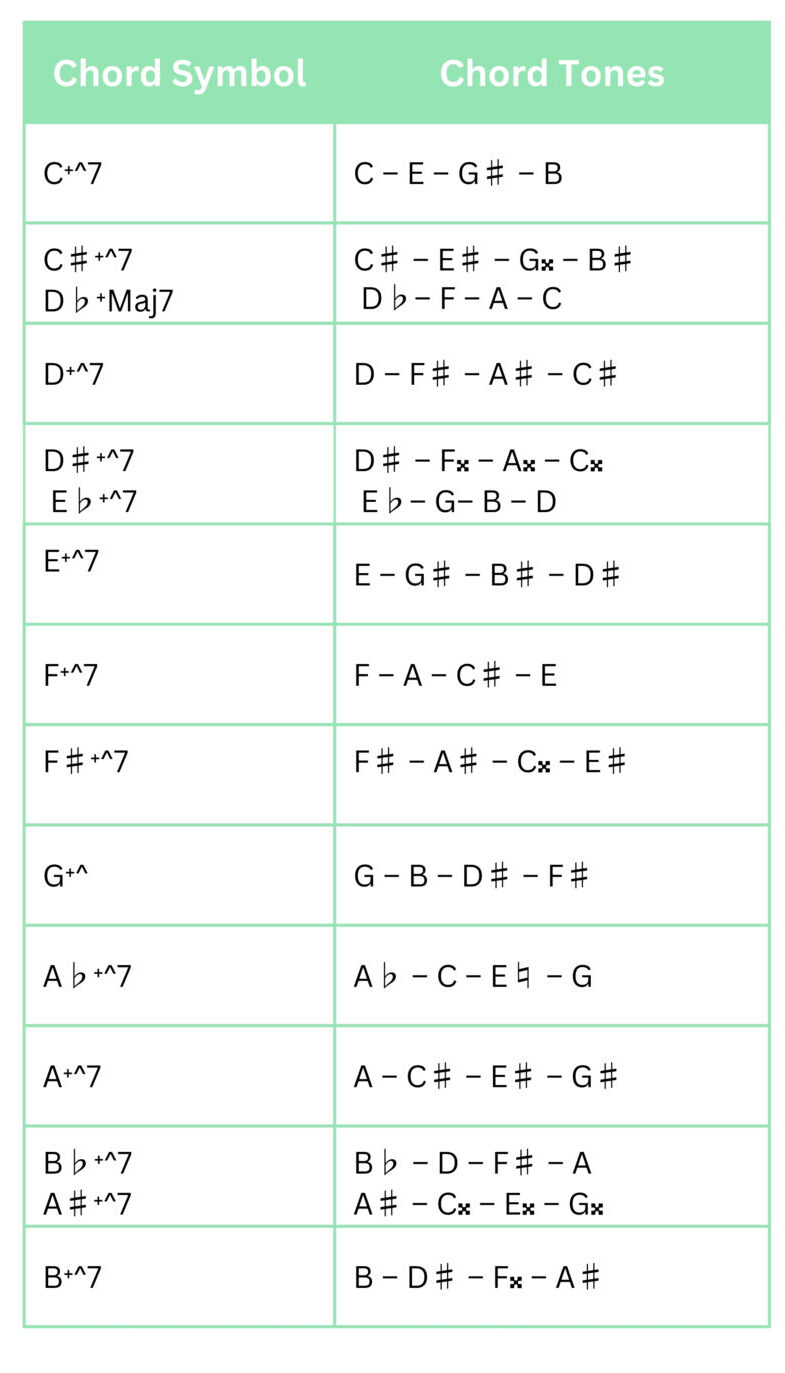
Augmented dominant seventh (7+)
The augmented dominant seventh chord or augmented 7th chord is a common alteration made to the standard dominant seventh chord. It adds brightness and extra tension to the already interesting dominant seventh. It can be written as a chord symbol either as a ‘7+’, ‘aug7’ or ‘7#5’.

This chord is constructed by adding a diminished third on top of the augmented triad creating a minor seventh from the root.
D – (major third ) – F# – (major third ) – A# – (diminished third ) – C♮
Or from the root:
C♮ – minor seventh
A# – augmented fifth
F# – major third
D – Root
This chord is mostly used in the context of altered harmony so it is best just to think of it as a dominant seven with a raised fifth. However, understanding the intervals that make up this chord will give you a deeper understanding of its function.
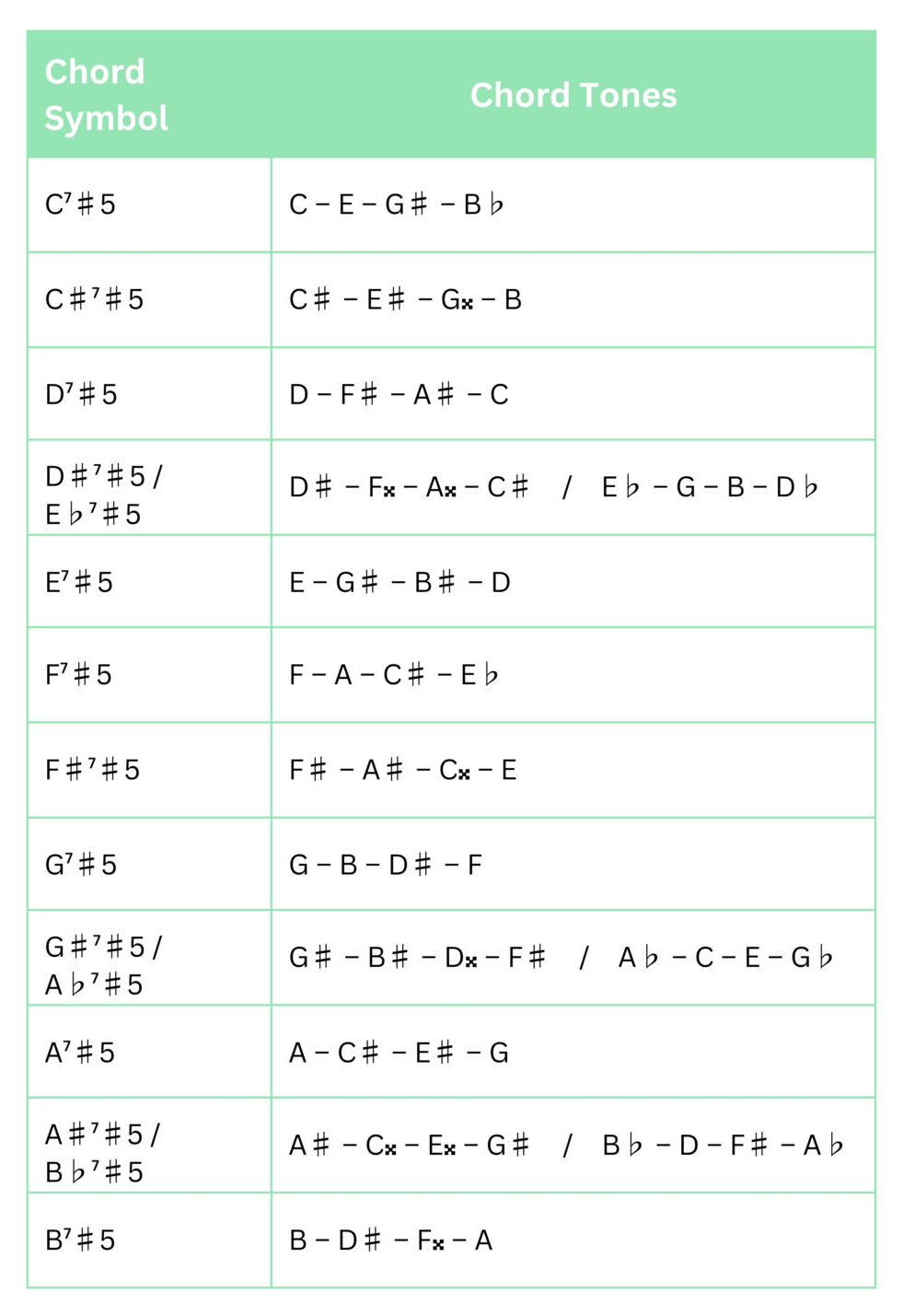
When and why to use augmented chords?
Now we can further our understanding of augmented chords in music by incorporating them into some common chord progressions.
In a chord progression, augmented chords can function in the same way as a dominant chord. For example you could swap out a G major chord for a G augmented, or a G7+ if you’re feeling adventurous, in a C major progression.
C major – A minor – F major – G major
The G is swapped for an augmented chord:
C major – A minor – F major – G+
This substitution introduces the augmented chord giving the progression a new sound. Play them back to back and see how the change makes you feel.
The best place to learn how to play piano and practice all the chords we have talked about in this article is to use the Skoove app. The augmented chord appears in all genres from classical to pop and jazz. With help from our app, guidance and real time feedback you will have these beautiful chords mastered in no time. Try these examples of songs with augmented chords and you will experience them in the context of some of your favorite tunes.
Augmented vs. diminished chords
The augmented and diminished are two very different sounding chords and are notated with either the letter ‘dim’ or a ‘°’ symbol. However, they are similar in the fact that they both are made up of stacks of a single interval. As we have seen the augmented chord is made of major thirds, the diminished triad is constructed with a stack of minor thirds.
If we stack minor thirds form C we get C E♭ and G♭
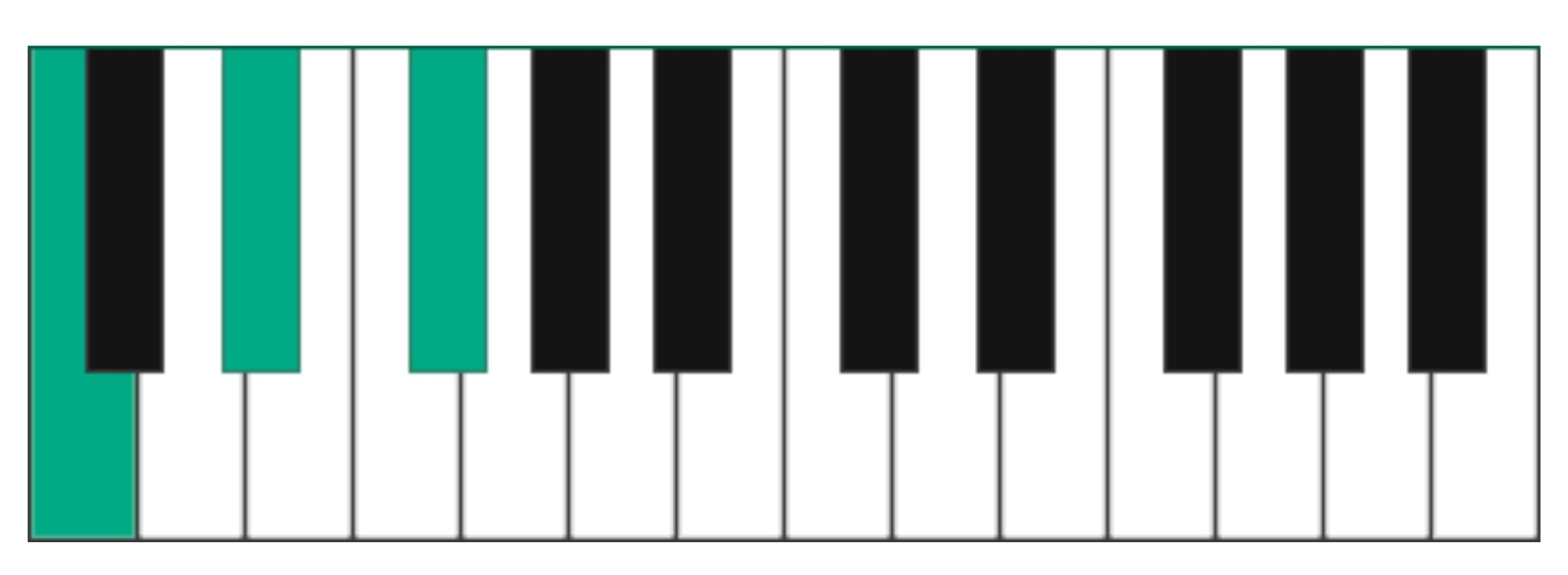
The formula for a diminished chord is: 1 – ♭3 – ♭5
Try playing this back to back with C augmented and pay attention to the difference in sound. In chord progressions the diminished triad can also be used as a substitute for a dominant chord. You can try using both B dim and G aug in place of a G chord (the dominant chord in C) in this progression. When substituting diminished chords you build them on the third of the existing dominant (the leading tone of C major). In this case it will be built on the B from the G major.
C major – A minor – F major – G major
C major – A minor – F major – B diminished (B D F)
C major – A minor – F major – G Augmented (G B D#)
Augmented chords, when used with consideration, these ethereal chords can add great character and depth to your piano playing. If you are interested in learning more about music theory, harmonies and scales, Skoove can help you reach your musical goals in an efficient and fun way. Check out the interactive lessons on chords, scales, and progressions and dive deeper into music theory today. Keep up the good work!
Author of this blog post:
Matthew Dickman

With over a decade of experience in music education Matthew holds a BA in Music from Paul McCartney’s LIPA and an MA in Composition from the University of Salford. Mathew has developed a distinctive compositional voice and approach to music theory education through his research and work in the music industry. Matthew’s writing for Skoove combines experience from orchestral and media composition, and as a gigging jazz musician, to create a wholistic and accessible pedagogy for musicians of any level. Away from music, he enjoys reading and exploring nature to expand his horizons and knowledge contributing to his holistic teaching style.







